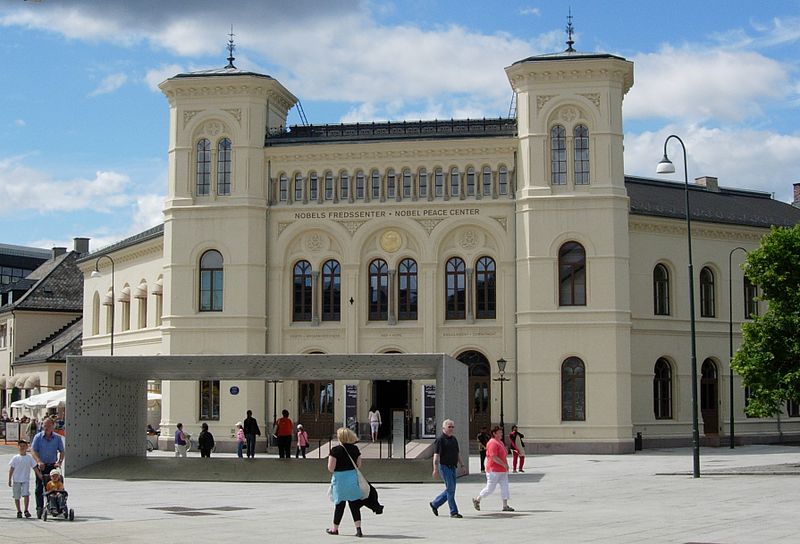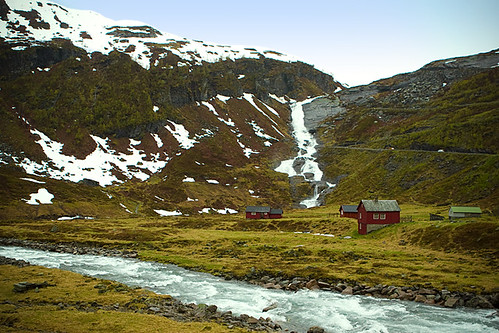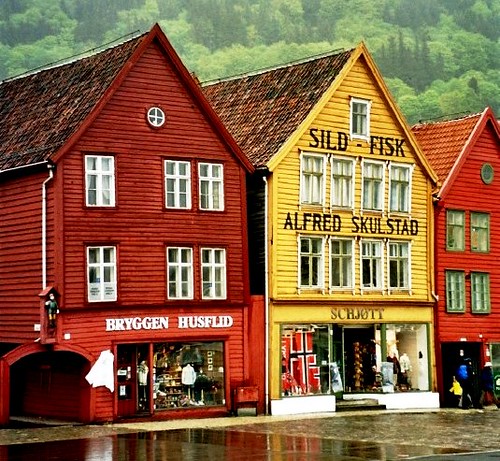Difference between revisions of "Adopting from Norway"
m (→SOURCE) |
|||
| (4 intermediate revisions by 2 users not shown) | |||
| Line 1: | Line 1: | ||
| − | {{#eimage:https://www.cia.gov/library/publications/the-world-factbook/graphics/flags/large/no-lgflag.gif|410x579px|thumb|'''The official flag | + | {{#eimage:https://www.cia.gov/library/publications/the-world-factbook/graphics/flags/large/no-lgflag.gif|410x579px|thumb|'''The official flag.'''<BR/>Source: cia.gov.}} |
| − | {{#eimage:https://www.cia.gov/library/publications/the-world-factbook/graphics/maps/no-map.gif|410x579px|thumb|'''Map | + | {{#eimage:https://www.cia.gov/library/publications/the-world-factbook/graphics/maps/no-map.gif|410x579px|thumb|'''Map.'''<BR/>Source: cia.gov.}} |
{{#eimage:https://www.cia.gov/library/publications/the-world-factbook/graphics/locator/eur/no_large_locator.gif|410x579px|thumb|'''.'''<BR/>Source: cia.gov.}} | {{#eimage:https://www.cia.gov/library/publications/the-world-factbook/graphics/locator/eur/no_large_locator.gif|410x579px|thumb|'''.'''<BR/>Source: cia.gov.}} | ||
| Line 7: | Line 7: | ||
{{#eimage:http://upload.wikimedia.org/wikipedia/commons/thumb/d/d5/Stavechurch-heddal.jpg/679px-Stavechurch-heddal.jpg|410x579px|thumb|'''Outside of the Stave church of Heddal.'''<BR/>Source: Wikipedia.org.}} | {{#eimage:http://upload.wikimedia.org/wikipedia/commons/thumb/d/d5/Stavechurch-heddal.jpg/679px-Stavechurch-heddal.jpg|410x579px|thumb|'''Outside of the Stave church of Heddal.'''<BR/>Source: Wikipedia.org.}} | ||
| − | {{#eimage: | + | {{#eimage:http://upload.wikimedia.org/wikipedia/commons/thumb/8/8a/OSLO-NO-02_05_ubt.jpeg/800px-OSLO-NO-02_05_ubt.jpeg|410x579px|thumb|''' The fortress Akershus Festning in Oslo, [[Norway]].'''<BR/>Source: Wikipedia.org.}} |
| − | {{#eimage:http://upload.wikimedia.org/wikipedia/commons/thumb/ | + | {{#eimage:http://upload.wikimedia.org/wikipedia/commons/thumb/6/65/Nobel_peace_center.jpg/800px-Nobel_peace_center.jpg|410x579px|thumb|'''The Nobel Peace Center in Oslo.'''<BR/>Source: Wikipedia.org.}} |
| − | {{#eimage:http://upload.wikimedia.org/wikipedia/commons/thumb/ | + | {{#eimage:http://upload.wikimedia.org/wikipedia/commons/thumb/b/b6/Oslo_17_mai_2010.jpg/800px-Oslo_17_mai_2010.jpg|410x579px|thumb|'''Norwegian children celebrating Constitution Day in Oslo, [[Norway]].'''<BR/>Source: Wikipedia.org.}} |
| − | {{#eimage: | + | {{#eimage:https://farm4.staticflickr.com/3477/3814867076_1aa9bcbd5e.jpg|410x579px|thumb|''''''<BR/>Source: flickr.com.}} |
| − | {{#eimage:https:// | + | {{#eimage:https://farm1.staticflickr.com/125/320840383_57734c0516.jpg|410x579px|thumb|'''Bryggen.'''<BR/>Source: flickr.com.}} |
| − | + | '''Notice: As of July 14, 2014, all individuals and agencies facilitating [[international]] adoptions must be in compliance with the Intercountry [[Universal Accreditation Act]].''' | |
| + | The information contained on this website is for educational purposes only and is not intended to be a substitute for professional legal advice. Always seek the advice of a licensed and qualified professional. While the content of this website is frequently updated, information changes rapidly and therefore, some information may be out of date, and/or contain inaccuracies, omissions or typographical errors. | ||
| − | |||
| − | Norway | + | =About Norway= |
| + | Two centuries of Viking raids into Europe tapered off following the [[adoption]] of Christianity by King Olav TRYGGVASON in 994. Conversion of the Norwegian kingdom occurred over the next several decades. In 1397, [[Norway]] was absorbed into a union with [[Denmark]] that lasted more than four centuries. To learn more please read [[About Norway]]. | ||
| − | |||
| − | = | + | =Hague Convention Information= |
| − | + | [[Norway]] is party to the Hague Convention on Protection of Children and Co-operation in Respect of Intercountry [[Adoption]] ([http://adoption.state.gov/hague_convention/overview.php Hague Adoption Convention]). Therefore all adoptions between [[Norway]] and the United States must meet the requirements of the Convention and U.S. law implementing the Convention. To learn more please read about [[Norway and the Hague Convention]]. | |
| − | + | =Who Can Adopt= | |
| − | + | [[Adoption]] between the United States and [[Norway]] is governed by the Hague [[Adoption]] Convention. Therefore to [[adopt]] from [[Norway]], you must first be found eligible to [[adopt]] by the U.S. Government. To learn more please read about [[Who Can Adopt from Norway]]. | |
| − | |||
| − | |||
| − | |||
| − | |||
| − | |||
| − | |||
| − | |||
| − | |||
| − | |||
| − | |||
| − | |||
| − | |||
| − | |||
| − | |||
| − | |||
| − | |||
| − | |||
=Who Can Be Adopted= | =Who Can Be Adopted= | ||
| − | Because Norway is party to the Hague Adoption Convention, children from Norway must meet the requirements of the Convention in order to be eligible for adoption. For example, the Convention requires that Norway attempt to place a child with a family in-country before determining that a child is eligible for intercountry adoption. In addition to Norway's requirements, a child must meet the definition of a Convention adoptee for you to bring him or her back to the United States. | + | Because [[Norway]] is party to the Hague [[Adoption]] Convention, children from [[Norway]] must meet the requirements of the Convention in order to be eligible for [[adoption]]. For example, the Convention requires that [[Norway]] attempt to place a child with a family in-country before determining that a child is eligible for intercountry [[adoption]]. In addition to [[Norway]]'s requirements, a child must meet the definition of a Convention adoptee for you to bring him or her back to the United States. |
=How to Adopt= | =How to Adopt= | ||
| Line 63: | Line 46: | ||
==Adoption Authority== | ==Adoption Authority== | ||
| − | '''Adoption Authority in Norway:''' | + | '''[[Adoption]] Authority in [[Norway]]:''' |
The Norwegian Directorate for Children, Youth and Family Affairs | The Norwegian Directorate for Children, Youth and Family Affairs | ||
| Line 71: | Line 54: | ||
==The Process== | ==The Process== | ||
| − | Because Norway is party to the Hague Adoption Convention, adopting from Norway must follow a specific process designed to meet the Convention's requirements. A brief summary of the Convention adoption process is given below. You must complete these steps in the following order so that your adoption meets all necessary legal requirements. | + | Because [[Norway]] is party to the Hague [[Adoption]] Convention, adopting from [[Norway]] must follow a specific process designed to meet the Convention's requirements. A brief summary of the Convention [[adoption]] process is given below. You must complete these steps in the following order so that your [[adoption]] meets all necessary legal requirements. |
| − | '''NOTE:''' The information provided is intended primarily to assist in rare adoption cases from Norway, including adoptions of Norwegian children by relatives in the United States, as well as adoptions from third countries by Americans living in Norway. | + | '''NOTE:''' The information provided is intended primarily to assist in rare [[adoption]] cases from [[Norway]], including adoptions of Norwegian children by relatives in the United States, as well as adoptions from third countries by Americans living in [[Norway]]. |
| Line 81: | Line 64: | ||
# Be Matched with a Child | # Be Matched with a Child | ||
# Apply for the Child to be Found Eligible for Immigration to the United States | # Apply for the Child to be Found Eligible for Immigration to the United States | ||
| − | # [[Adopt]] the Child in Norway | + | # [[Adopt]] the Child in [[Norway]] |
# Bring your Child Home | # Bring your Child Home | ||
| − | + | To learn more about this process please read [[How to Adopt from Norway]]. | |
| − | + | ||
| − | + | ||
| − | + | ||
| − | + | ||
| − | + | ||
| − | + | ||
| − | + | ||
| − | + | ||
| − | + | ||
| − | + | ||
| − | + | ||
| − | + | ||
| − | + | ||
| − | + | ||
| − | + | ||
| − | + | ||
| − | + | ||
| − | + | ||
| − | + | ||
| − | + | ||
| − | + | ||
| − | + | ||
| − | + | ||
| − | + | ||
| − | + | ||
| − | + | ||
| − | + | ||
| − | + | ||
| − | + | ||
| − | + | ||
| − | + | ||
| − | + | ||
| − | + | ||
| − | + | ||
| − | + | ||
| − | + | ||
| − | + | ||
| − | + | ||
| − | + | ||
| − | + | ||
| − | + | ||
| − | + | ||
| − | + | ||
| − | + | ||
| − | + | ||
| − | + | ||
| − | + | ||
| − | + | ||
| − | + | ||
| − | + | ||
| − | + | ||
| − | + | ||
| − | + | ||
| − | + | ||
| − | + | ||
| − | + | ||
| − | + | ||
| − | + | ||
| − | + | ||
| − | + | ||
| − | + | ||
| − | + | ||
| − | + | ||
| − | + | ||
| − | + | ||
| − | + | ||
| − | + | ||
| − | + | ||
| − | + | ||
| − | + | ||
| − | + | ||
| − | + | ||
| − | + | ||
| − | + | ||
| − | + | ||
| − | + | ||
| − | + | ||
| − | + | ||
| − | + | ||
| − | + | ||
| − | + | ||
| − | + | ||
| − | + | ||
| − | + | ||
| − | + | ||
| − | + | ||
| − | + | ||
| − | + | ||
| − | + | ||
=Traveling Abroad= | =Traveling Abroad= | ||
| Line 179: | Line 73: | ||
'''Applying for Your U.S. Passport''' | '''Applying for Your U.S. Passport''' | ||
| − | A valid U.S. passport is required to enter and leave Norway. Only the U.S. Department of State has the authority to grant, issue, or verify U.S. passports. Getting or renewing a passport is easy. | + | A valid U.S. passport is required to enter and leave [[Norway]]. Only the U.S. Department of State has the authority to grant, issue, or verify U.S. passports. Getting or renewing a passport is easy. To learn more please read about [[Traveling Abroad in Norway]]. |
| − | + | ||
| − | + | ||
| − | + | ||
| − | + | ||
| − | + | ||
| − | + | ||
| − | + | ||
| − | + | ||
| − | + | ||
| − | + | ||
| − | + | ||
| − | + | ||
| − | + | ||
| − | |||
=After Adoption= | =After Adoption= | ||
| Line 213: | Line 93: | ||
| − | + | =Contact Information= | |
| − | '''U.S. Embassy in Norway''' | + | '''U.S. Embassy in [[Norway]]''' |
Henrik Ibsens Gate 48 | Henrik Ibsens Gate 48 | ||
| Line 225: | Line 105: | ||
| − | '''Norway's Adoption Authority''' | + | '''[[Norway]]'s [[Adoption]] Authority''' |
The Norwegian Directorate for Children, Youth and Family Affairs | The Norwegian Directorate for Children, Youth and Family Affairs | ||
| Line 248: | Line 128: | ||
| − | Norway has Consulates General in [[New York]], Houston, San Francisco and Minneapolis. See www.norway.org | + | [[Norway]] has Consulates General in [[New York]], Houston, San Francisco and Minneapolis. See www.norway.org |
| Line 269: | Line 149: | ||
==SOURCE== | ==SOURCE== | ||
| − | '''Intercountry [[Adoption]], Bureau of Consular Affairs. U.S. Department of State Country Information''' | + | '''Intercountry [[Adoption]], Bureau of Consular Affairs. U.S. Department of State Country Information''' adoption.state.gov/country_information/country_specific_info.php?country-select=norway |
[[Category: International Adoption]] | [[Category: International Adoption]] | ||
Latest revision as of 02:08, 21 February 2018
Notice: As of July 14, 2014, all individuals and agencies facilitating international adoptions must be in compliance with the Intercountry Universal Accreditation Act.
The information contained on this website is for educational purposes only and is not intended to be a substitute for professional legal advice. Always seek the advice of a licensed and qualified professional. While the content of this website is frequently updated, information changes rapidly and therefore, some information may be out of date, and/or contain inaccuracies, omissions or typographical errors.
Contents
About Norway
Two centuries of Viking raids into Europe tapered off following the adoption of Christianity by King Olav TRYGGVASON in 994. Conversion of the Norwegian kingdom occurred over the next several decades. In 1397, Norway was absorbed into a union with Denmark that lasted more than four centuries. To learn more please read About Norway.
Hague Convention Information
Norway is party to the Hague Convention on Protection of Children and Co-operation in Respect of Intercountry Adoption (Hague Adoption Convention). Therefore all adoptions between Norway and the United States must meet the requirements of the Convention and U.S. law implementing the Convention. To learn more please read about Norway and the Hague Convention.
Who Can Adopt
Adoption between the United States and Norway is governed by the Hague Adoption Convention. Therefore to adopt from Norway, you must first be found eligible to adopt by the U.S. Government. To learn more please read about Who Can Adopt from Norway.
Who Can Be Adopted
Because Norway is party to the Hague Adoption Convention, children from Norway must meet the requirements of the Convention in order to be eligible for adoption. For example, the Convention requires that Norway attempt to place a child with a family in-country before determining that a child is eligible for intercountry adoption. In addition to Norway's requirements, a child must meet the definition of a Convention adoptee for you to bring him or her back to the United States.
How to Adopt
Adoption Authority
The Norwegian Directorate for Children, Youth and Family Affairs Ministry of Children and Equality
The Process
Because Norway is party to the Hague Adoption Convention, adopting from Norway must follow a specific process designed to meet the Convention's requirements. A brief summary of the Convention adoption process is given below. You must complete these steps in the following order so that your adoption meets all necessary legal requirements.
NOTE: The information provided is intended primarily to assist in rare adoption cases from Norway, including adoptions of Norwegian children by relatives in the United States, as well as adoptions from third countries by Americans living in Norway.
- Choose an Accredited Adoption Service Provider
- Apply to be Found Eligible to Adopt
- Be Matched with a Child
- Apply for the Child to be Found Eligible for Immigration to the United States
- Adopt the Child in Norway
- Bring your Child Home
To learn more about this process please read How to Adopt from Norway.
Traveling Abroad
Applying for Your U.S. Passport
A valid U.S. passport is required to enter and leave Norway. Only the U.S. Department of State has the authority to grant, issue, or verify U.S. passports. Getting or renewing a passport is easy. To learn more please read about Traveling Abroad in Norway.
After Adoption
What resources are available to assist families after the adoption?
Many adoptive parents find it important to find support after the adoption. Take advantage of all the resources available to your family -- whether it's another adoptive family, a support group, an advocacy organization, or your religious or community services.
Here are some good places to start your support group search:
Child Welfare Information Gateway
North American Council on Adoptable Children
Adoption Services Support Group for Adopting Persons
Contact Information
U.S. Embassy in Norway
Henrik Ibsens Gate 48 0244 Oslo Tel: 47/2244-8550 Fax: 47/2256-2751 osloamcit@state.gov Internet: U.S. Embassy Norway
The Norwegian Directorate for Children, Youth and Family Affairs Ministry of Children and Equality Barne- ungdoms- og familiedirektoratet Postboks 8113 Dep Universitetsgata 7, 0032 Oslo Tel: 47/2404-4000 Fax: 47/2404-4001 Email: post@bufdir.no Internet: Norway Adoption Authority
Royal Norwegian Embassy
2720 34th St., NW Washington, D.C. 20008 Tel: 202/333-6000 Fax: 202/337-0870 Email: emb.washington@mfa.no Internet: Royal Norwegian Embassy
Norway has Consulates General in New York, Houston, San Francisco and Minneapolis. See www.norway.org
Office of Children's Issues
U.S. Department of State CA/OCS/CI SA-17, 9th Floor Washington, DC 20522-1709 Tel: 1-888-407-4747 E-mail: AskCI@state.gov Internet: U.S. Department of State
U.S. Citizenship and Immigration Services (USCIS)
For questions about immigration procedures, call the National Customer Service Center (NCSC) 1-800-375-5283 (TTY 1-800-767-1833)
SOURCE
Intercountry Adoption, Bureau of Consular Affairs. U.S. Department of State Country Information adoption.state.gov/country_information/country_specific_info.php?country-select=norway








